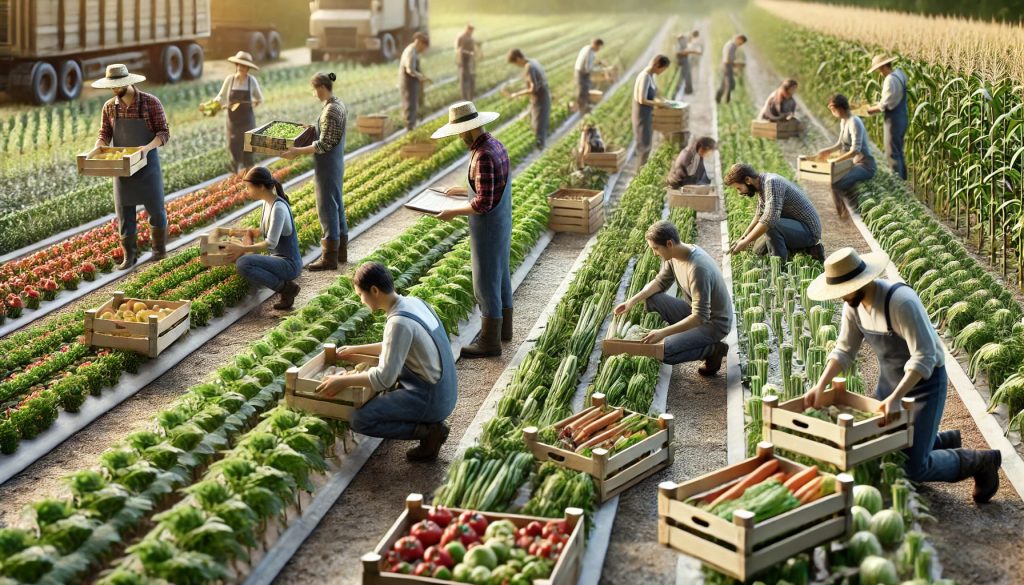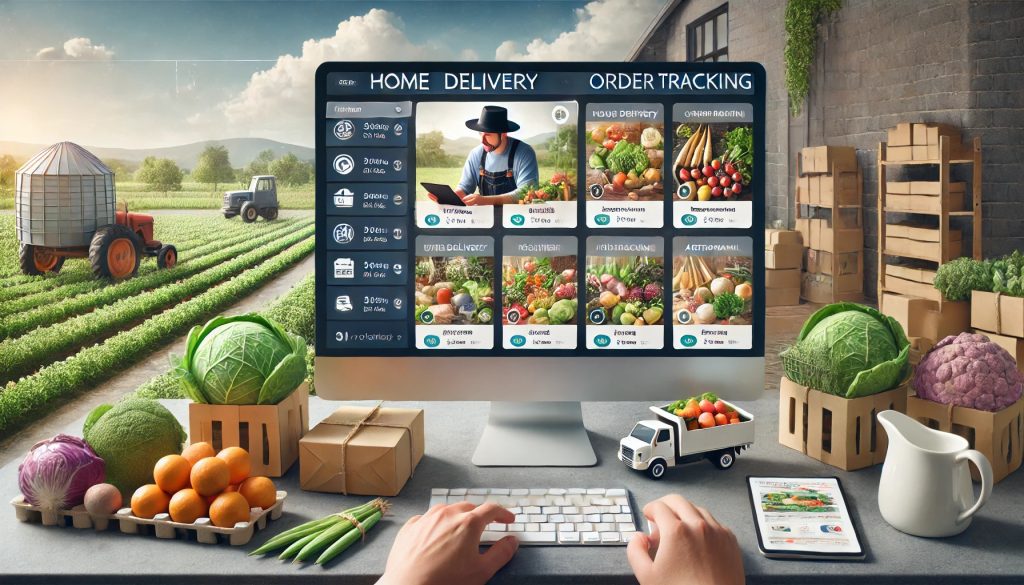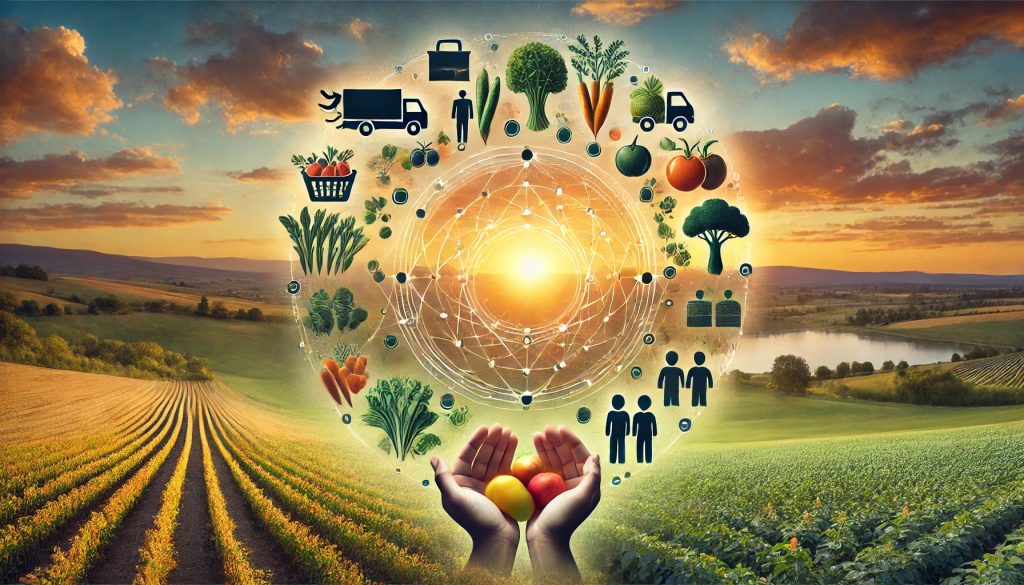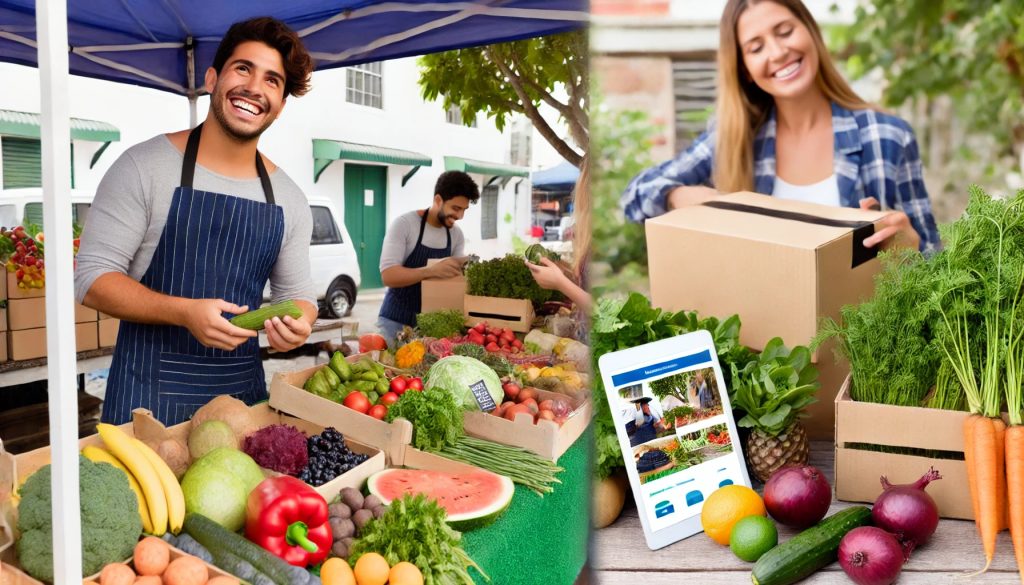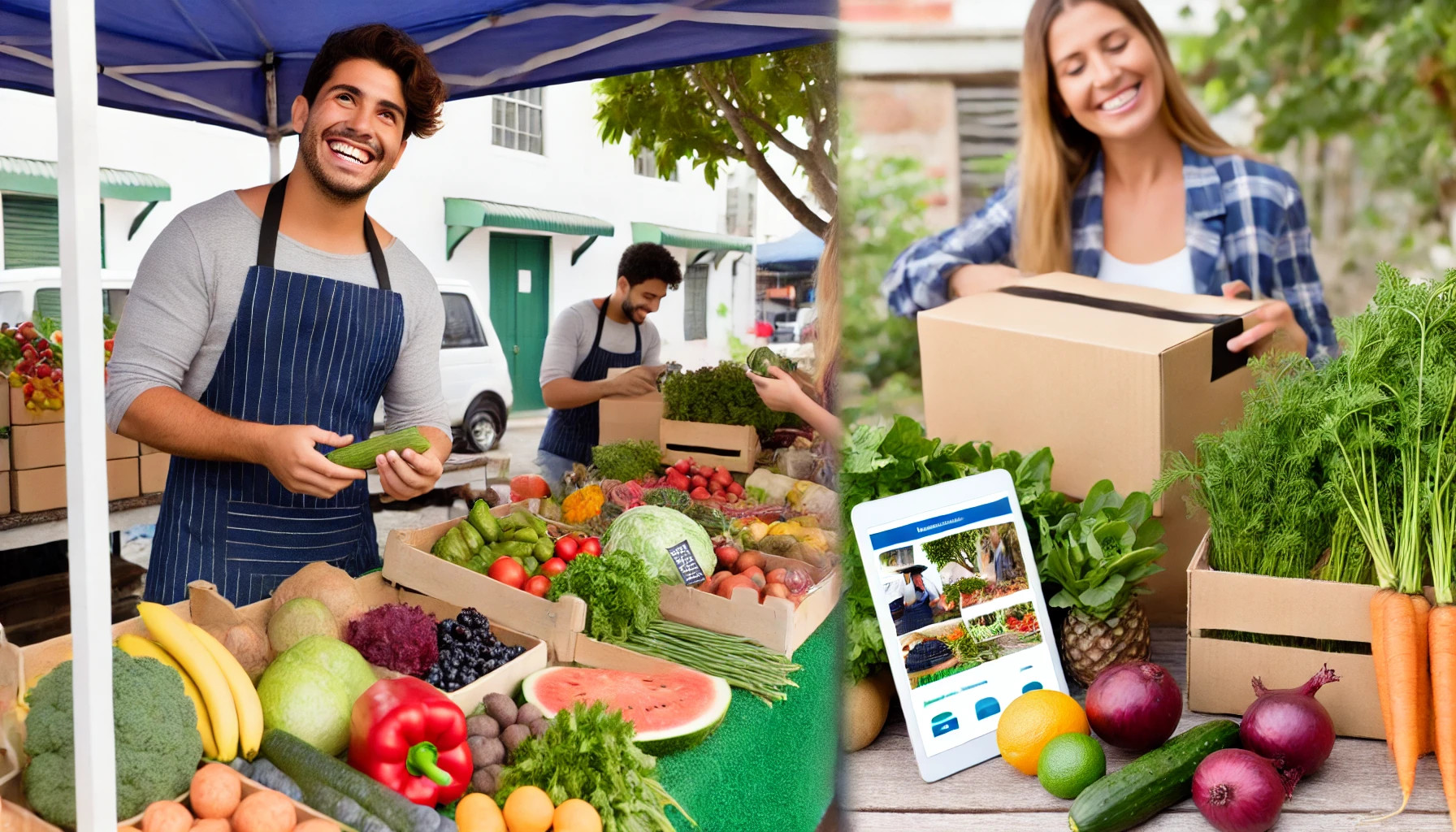Formy AFN (5 min)
Ta sekcja zawiera informacje na temat różnych rodzajów alternatywnych sieci żywnościowych (AFN), z których każda oferuje producentom i konsumentom unikalne sposoby nawiązywania kontaktów. Ta sekcja pomoże Ci zrozumieć, w jaki sposób te różne podejścia działają w celu wspierania lokalnych gospodarek, zwiększania zaangażowania społeczności i promowania zrównoważonych systemów żywnościowych.
- Bezpośrednie inicjatywy sprzedaży detalicznej są najbardziej podstawową i prostą formą AFN, w ramach której rolnicy sprzedają swoje produkty bezpośrednio konsumentom, omijając tradycyjne kanały dystrybucji. Takie podejście pozwala producentom zatrzymać większą część swoich zysków poprzez wyeliminowanie pośredników. Rolnicy pełnią wiele ról, działając jako reklamodawcy, sprzedawcy i dostawcy. Mogą sprzedawać swoje produkty za pośrednictwem różnych kanałów, w tym własnych stron internetowych, platform mediów społecznościowych, takich jak Facebook, lub tradycyjnych rynków lokalnych. Ta bezpośrednia interakcja między rolnikiem a nabywcą tworzy osobistą więź i zapewnia, że żywność jest tak świeża i lokalna, jak to tylko możliwe.
- Spółdzielnie spożywcze to organizacje należące do członków, które priorytetowo traktują sprzedaż produktów lokalnych i ekologicznych. Przystępując do spółdzielni spożywczej, członkowie nie tylko uzyskują dostęp do świeżej, lokalnej żywności, ale także mają wpływ na sposób prowadzenia spółdzielni, co sprzyja poczuciu wspólnoty i wspólnej odpowiedzialności.
- Partnerstwa między producentami a konsumentami, często przykładane przez rolnictwo wspierane przez społeczność (CSA), tworzą silne powiązania między rolnikami a konsumentami. W ramach tych partnerstw konsumenci zazwyczaj płacą roczną opłatę w zamian za udział w zbiorach, dzieląc się z producentami zarówno ryzykiem, jak i korzyściami związanymi z rolnictwem.
- Spółdzielnie producenckie to współpraca między wieloma producentami, którzy współpracują ze sobą w celu usprawnienia i usprawnienia swoich operacji biznesowych. Spółdzielnie te mogą usprawnić różne aspekty działalności, w tym produkcję, dystrybucję i marketing. Współpracując ze sobą, producenci mogą osiągnąć korzyści skali, obniżyć koszty i zwiększyć swój zasięg rynkowy, co ułatwia konkurowanie z większymi, bardziej tradycyjnymi systemami dystrybucji żywności.
- Platformy służą jako internetowe platformy handlowe, na których producenci mogą sprzedawać i promować swoje produkty. Na platformach mogą znaleźć się dedykowane strony internetowe, sklepy internetowe, a nawet grupy w mediach społecznościowych. Platformy te nie tylko pomagają rolnikom indywidualnym dotrzeć do szerszego grona odbiorców, ale często także prezentują produkty od wielu producentów, zwiększając widoczność dla wszystkich zaangażowanych. Platformy mogą obejmować zarówno podstawowe wykazy dostępnych lokalnych produktów spożywczych, jak i witryny z pełnym zakresem usług, które oferują opcje zakupu i dostawy, ułatwiając konsumentom dostęp do lokalnej żywności bez potrzeby korzystania z fizycznych rynków.
Uwaga: Następujące typy zostały zidentyfikowane przez konsorcjum podczas badania źródeł wtórnych AFN w krajach Europy Środkowej. Należy pamiętać, że te przykłady nie obejmują wszystkich możliwych typów, w których można rozpoznać AFN.
